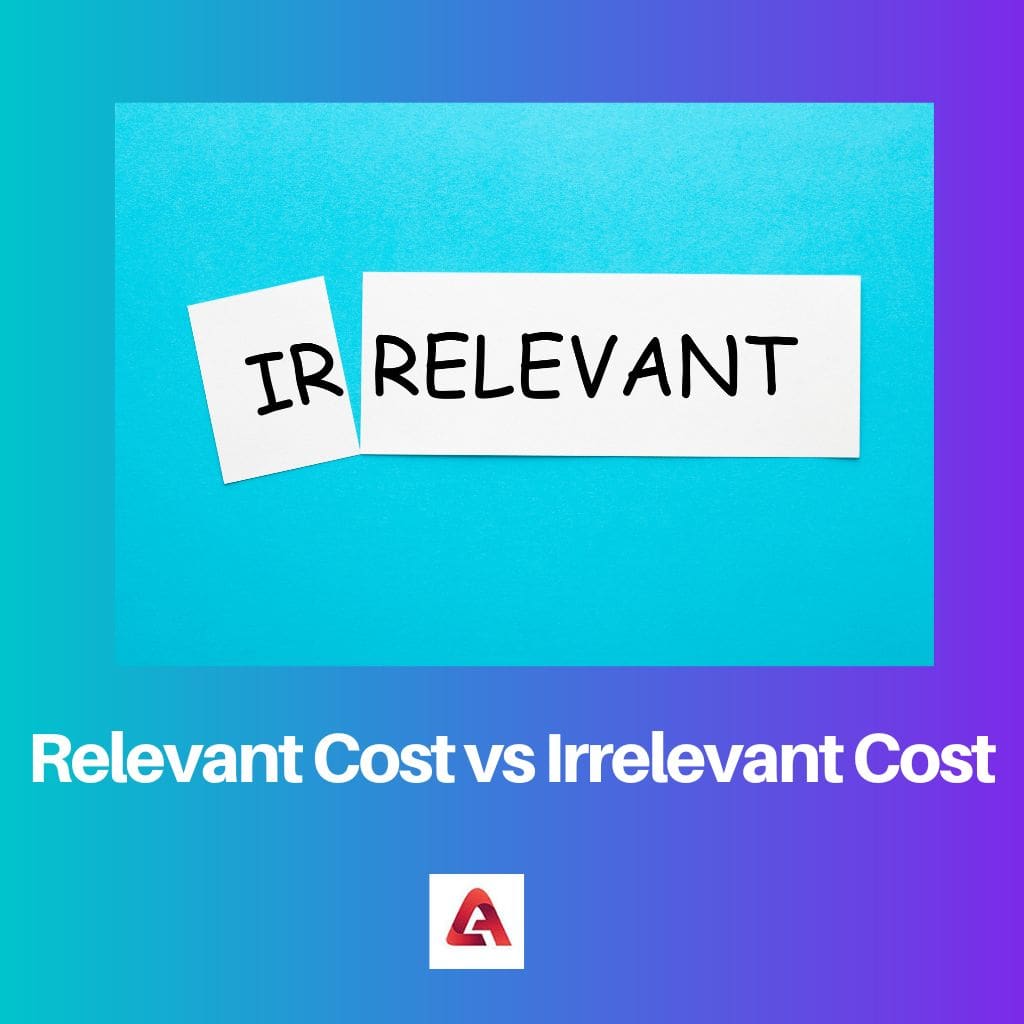When it comes to running a business, a person has to make up many costs. There are many types of costs that are made, such as fixed costs, variable costs, operating costs, sinking costs, etc.
Two main costs are the relevant costs and the irrelevant costs. Both these costs have a vast difference between them.
Key Takeaways
- Relevant costs directly apply to a specific decision, while irrelevant expenses do not affect the decision.
- Relevant costs can be either fixed or variable, while irrelevant costs are sunk costs already incurred.
- Relevant costs are significant in decision-making because they help to determine the actual costs and benefits of different options.
Relevant Cost vs Irrelevant Cost
A relative cost is a type of cost that is different at different places. Future costs are considered while making decisions regarding relative costs. It can be avoided after the implementation of the decision. An irrelevant cost remains the same throughout the decision-making process. Irrelevant costs are divided into two main types.

A relevant cost is a cost that is said to differ at different places. The decisions are taken according to the future costs and not the historical cost when it comes to deciding the relevant cost.
Relevant costs are those which are stated to be avoidable while a decision is implemented.
An irrelevant cost is a cost that is always the same regardless of any decisions taken while someone implements them. In short, they are never considered when a decision is taken regarding a cost.
There are two main categories of irrelevant costs based on their characteristics, one which is sunk cost and the other which is constant regardless of any alternative.
Comparison Table
| Parameters of Comparison | Relevant Cost | Irrelevant Cost |
|---|---|---|
| Type of cost | This is a kind of variable cost. | This is a kind of fixed cost. |
| Function | This type of cost helps to cover expenses related to Operational and recurring expenditure. | This type of cost helps to cover expenses related to capital. |
| Term of cost | This type of cost is on a short-term basis. | This type of cost is on a long-term basis. |
| Management Type | This type of cost in a company is always incurred by the lower management. | This type of cost is incurred by the higher management in a company. |
| Consideration | This cost can be avoided. | This cot cannot be avoided. |
What is Relevant Cost?
A relevant cost is a cost that is said to differ at different places. The decisions are taken according to the future costs and not the historical cost when it comes to deciding the relevant cost.
Relevant costs are those which are stated to be avoidable while a decision is implemented.
The relevant cost is the addition of the loading and unloading charge of goods when it’s consigned or sold to the opposite party in a business. This, in actuality, is not the cost of charges of fuel and transport in business.
A relevant cost is also known to be told as a differential cost.
A difference is observed in the relevant cost per each alternative decision. There are four types of relevant costs, and they are the future cash flows that are costs which are incurred as per future decisions, available costs, which are costs that are available in case of any decision is not implemented, the opportunity cost, which is sacrificed when a decision is taken and the incremental cost.

What is Irrelevant Cost?
An irrelevant cost is a cost that is always the same regardless of any decisions taken while someone implements them. In short, they are never considered when a decision is taken regarding a cost.
There are two main categories of irrelevant costs based on their characteristics. One is a sunk cost, and the other is constant regardless of any alternative.
A sunk cost is a cost that has already been incurred. This kind of cost cannot be changed by any decision taken in the present or future.
An example of this can be when a new piece of furniture is purchased and replaced with an item of old furniture, then the cost of that old furniture is said to be the sunk cost. An irrelevant cost is always fixed.
There are four types of irrelevant costs are the sunk cost which is the cost of the old furniture in the example, and the committed cost, which cannot be altered as it’s a future cost. Non-cash expenses include the depreciation of an asset and the overheads during the administration work.
These costs are never being taken into consideration while making a decision.

Main Differences Between Relevant cost and Irrelevant Cost
- A relevant cost is always said to be a variable cost, and an irrelevant cost is always said to be a fixed cost.
- A relevant cost covers expenses related to Operational and recurring expenditures; on the other hand, an irrelevant cost covers expenses related to capital expenditure.
- A relevant cost is for a short-term basis; on the other hand, an irrelevant cost is for a long-term one.
- The lower management always incurs a relevant cost in a company, and on the other hand, is a company, the irrelevant cost is incurred by the higher management.
- In a business, a relevant cost can be avoided, and on the other hand, in a business, an irrelevant cost cannot be avoided.




